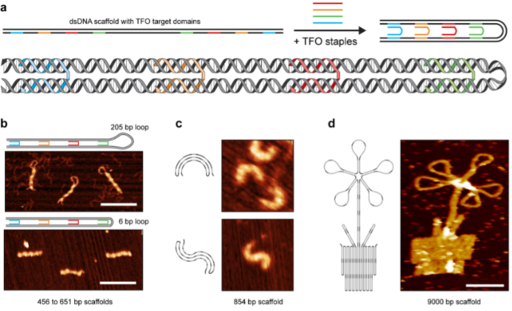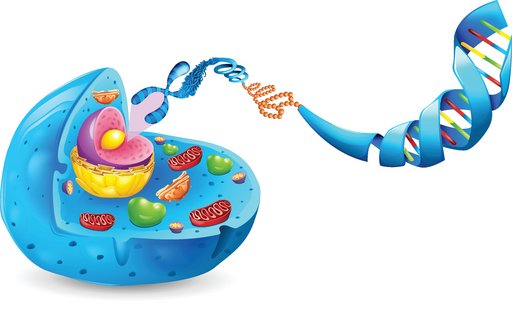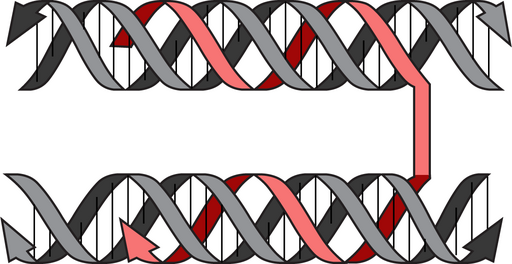Folding the code of life: Triplex origami opens new avenues of research
Researchers from Aarhus University have developed a revolutionary new method, called triplex origami, to manipulate the shape and tight packing of DNA. The new discoveries open up exciting new possibilities in gene therapy, nanotechnology, and more.
Every cell in your body contains about 2 metres of DNA, which carries the essential genetic information about you as an individual. If you unwind all the DNA contained in a single person, it would stretch over a staggering distance - enough to reach the sun and back again over 60 times. To handle such astonishingly long molecules, the cell compresses its DNA into compact packages called chromosomes.
"Imagine DNA as a piece of paper on which all our genetic information is written." Says Minke A.D. Nijenhuis, co-corresponding author of the new paper. "The paper is folded in a very tight structure to fit all this information in a small cell nucleus. But to read the information, parts of the paper have to be unfolded and then folded again. This spatial organisation of our genetic code is a central mechanism in life. We therefore wanted to create a methodology that allows researchers to engineer and study the compaction of double-stranded DNA.”
Triple helical structure provides protection and compactness
In nature, DNA is often made up of two strands that are twisted together into a double helix. One strand contains the genes responsible for encoding our traits and the other strand acts as a backup. These two strands are held together by certain bonds, called Watson-Crick interactions, which allow the two strands to recognise and bind to each other. In addition to these well-known interactions, there is a lesser-known type of interaction between DNA strands. These so-called normal or reverse Hoogsteen interactions allow a third strand to join and form a beautiful triple helical structure: a triplex (figure 2).
In the new article published in the scientific journal Advanced Materials, researchers from Gothelf's laboratory at Aarhus University have introduced a simple method for organising DNA strands. The method is based on the aforementioned Hoogsteen interactions. The research shows that using this method, DNA can be bent or "folded" in a way that creates compact structures. These structures can take various forms, from hollow two-dimensional shapes to dense three-dimensional constructions and everything in between. In fact, you can even create structures that resemble a potted flower. The researchers call their method triplex origami (figure 3).
Potential in gene therapy and beyond

Using triplex origami, scientists can achieve unprecedented control over the shape of DNA molecules, opening up new possibilities for research. Previous studies have suggested that triplex formation plays a role in the natural packaging of DNA in cells, and this study can help us learn more about this important biological process.
The study also shows that triplex formation protects DNA from enzymatic degradation. The ability to compress and protect DNA using the triplex origami method could therefore be of great importance in gene therapy, where diseased cells are repaired by delivering a function they lack via a DNA package.
The amazing biological properties of DNA's sequence and structure have already been utilised in nanotechnology, which has had an impact on medical treatments, diagnostics and many other areas. "For the past four decades, DNA nanotechnology has relied almost exclusively on Watson-Crick base interactions to assemble single-stranded DNA and organise them into custom nanostructures." Says Professor Kurt V. Gothelf. " We now know that Hoogsteen interactions have the same potential to organize double-stranded DNA, which presents a significant conceptual expansion for the field."
Gothelf and co-workers demonstrated that Hoogsteen-mediated folding is compatible with state-of-the-art Watson-Crick-based methods. Due to the comparative rigidity of double-stranded DNA, however, triplex origami structures require fewer starting materials. This allows larger structures to be formed at significantly lower cost.
The new method has the limitation that triplex formation typically requires long stretches of a specific building block, called purine bases. Here the researchers have used artificial DNA sequences instead of natural genetic DNA. In the future, they will work towards overcoming this limitation.
Additional information | |
We strive to ensure that all our articles live up to the Danish universities' principles for good research communication(scroll down to find the English version on the web-site). Because of this the article will be supplemented with the following information: | |
Funding | Novo Nordic Foundation (Grant no. NNF17OC0028070) EU - Marie Skłodowska-Curie ITN projects DNA-Robotics (Project ID 765703) and CONSENSE (Project ID 955623). |
Conflict of interests | None |
Read more | The scientific article in Advanced Materials: Folding Double-Stranded DNA into Designed Shapes with Triplex-Forming Oligonucleotides |
Kontakt | Professor Kurt Vesterager Gothelf Postdoc Minke A. D. Nijenhuis |


